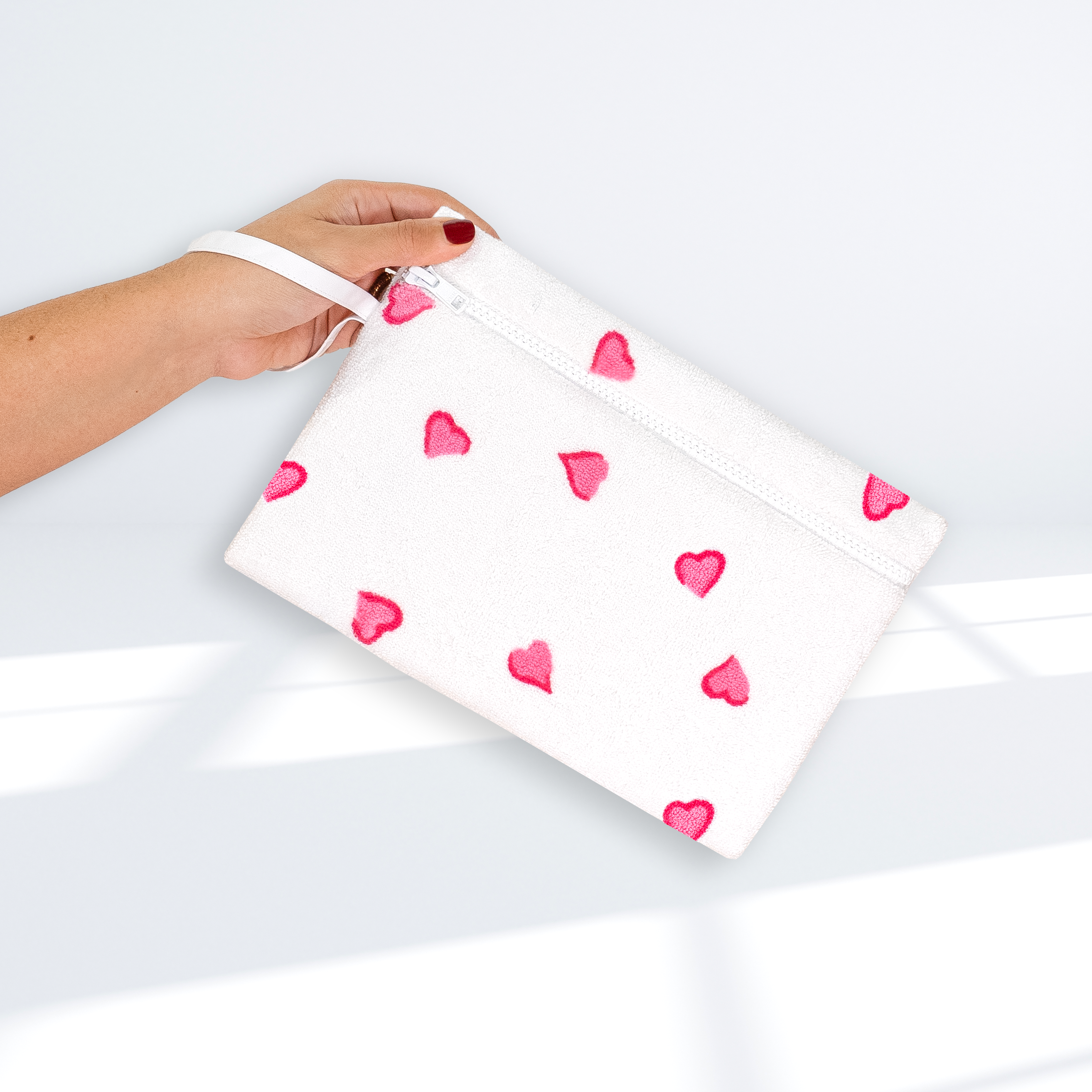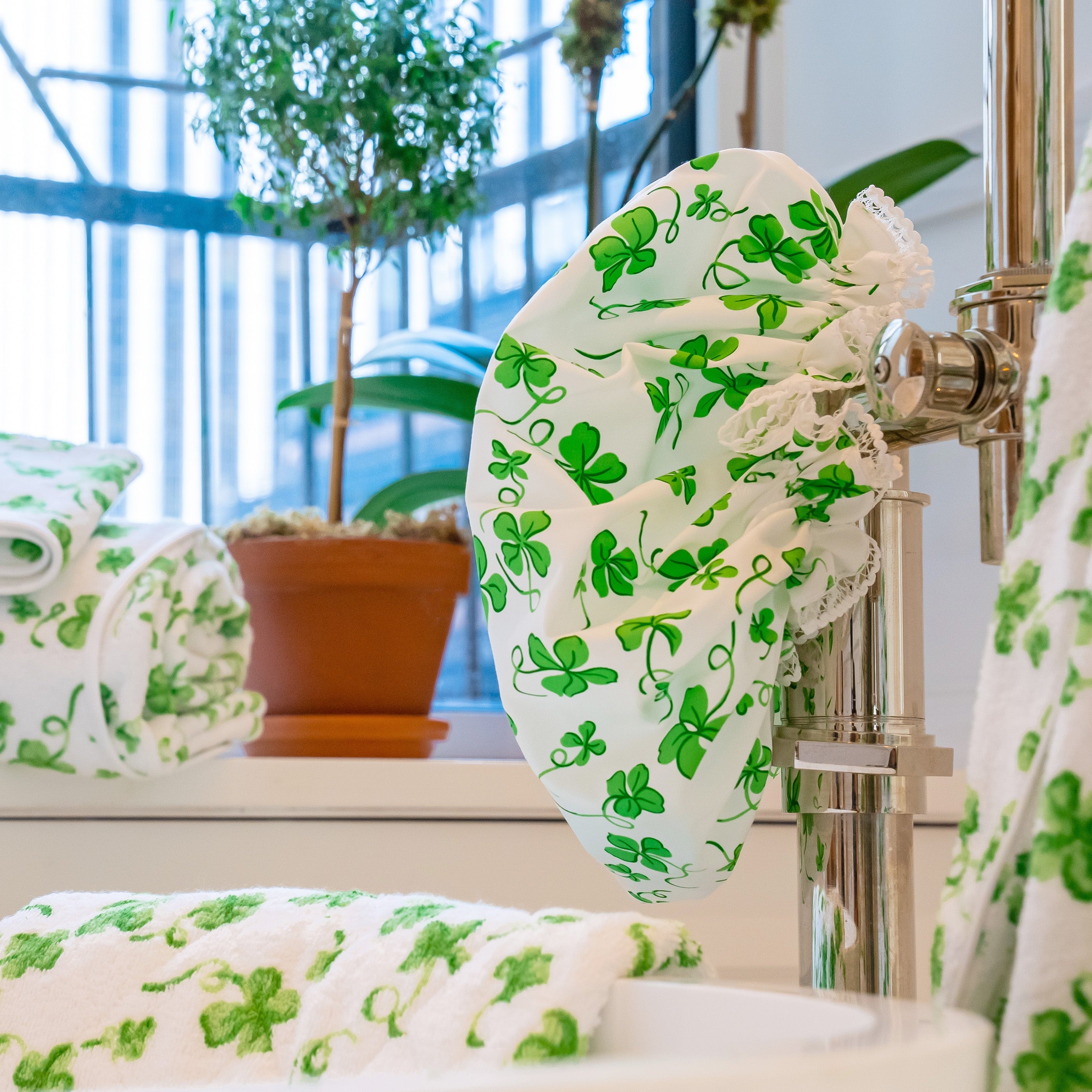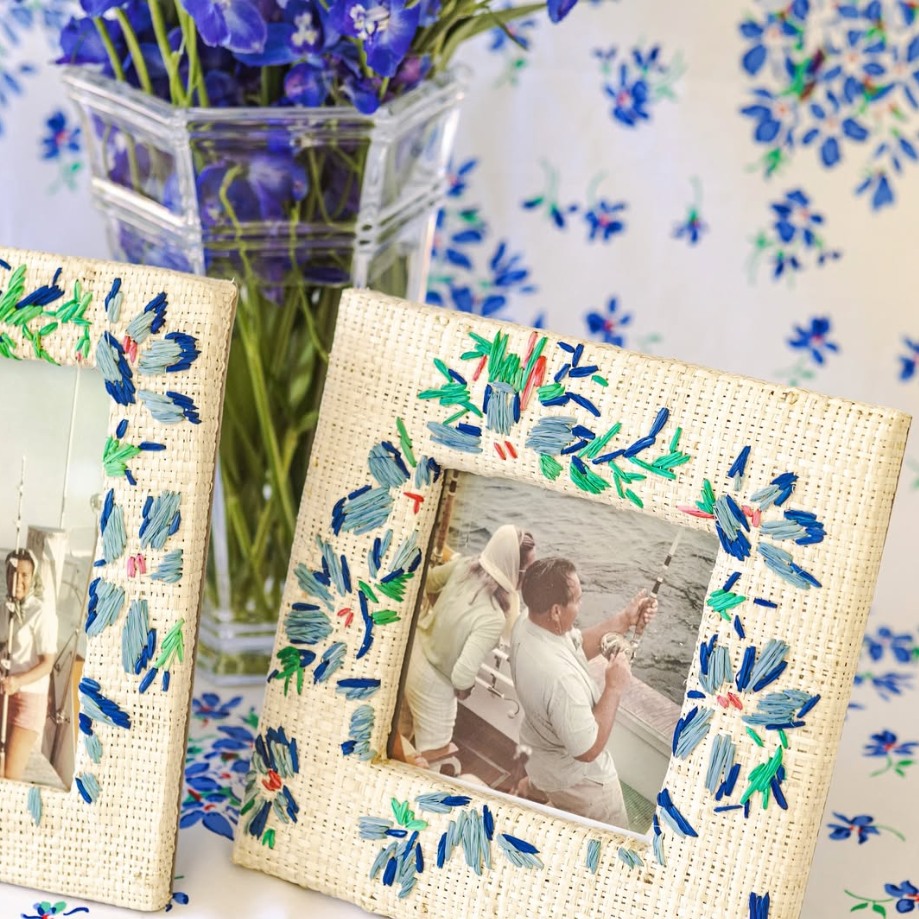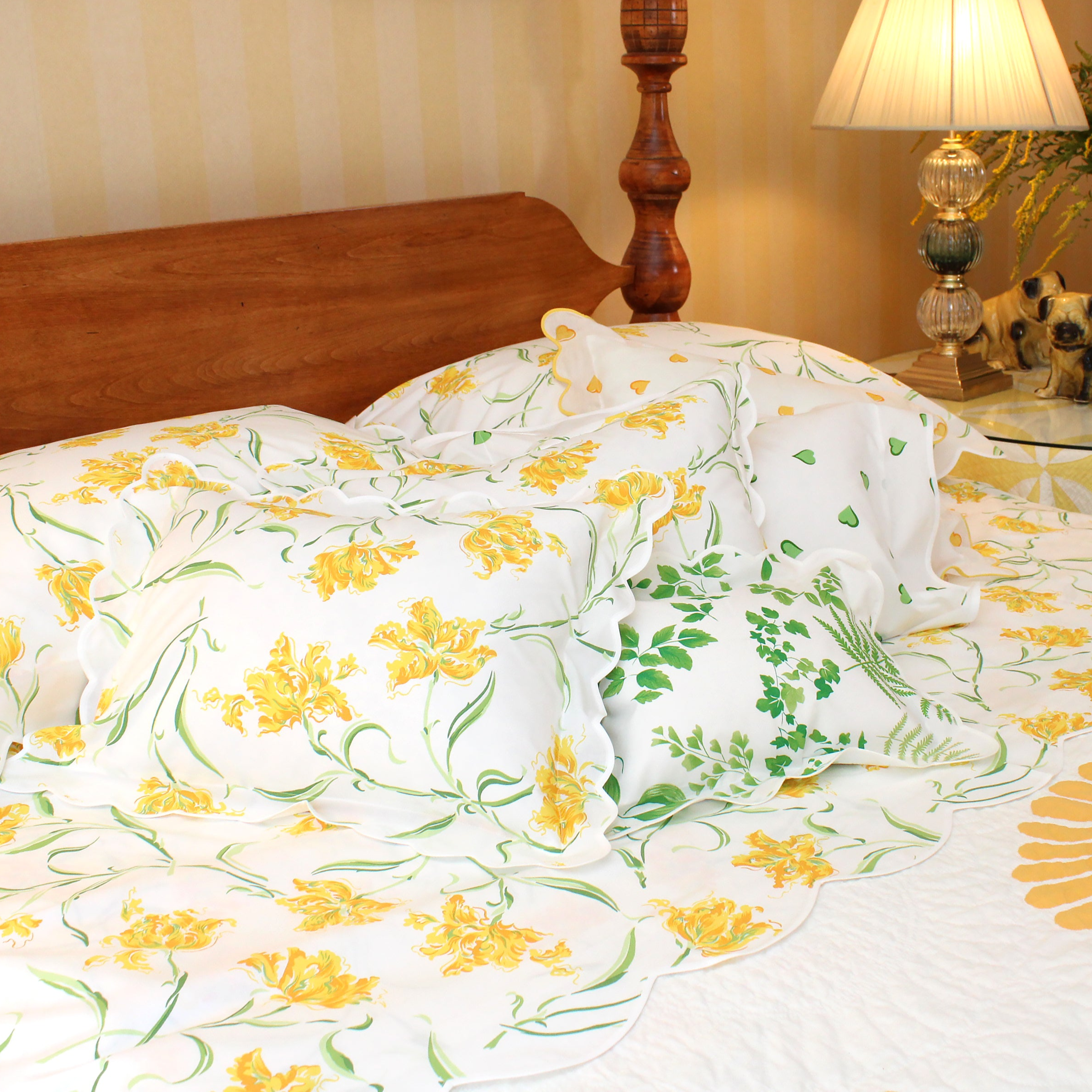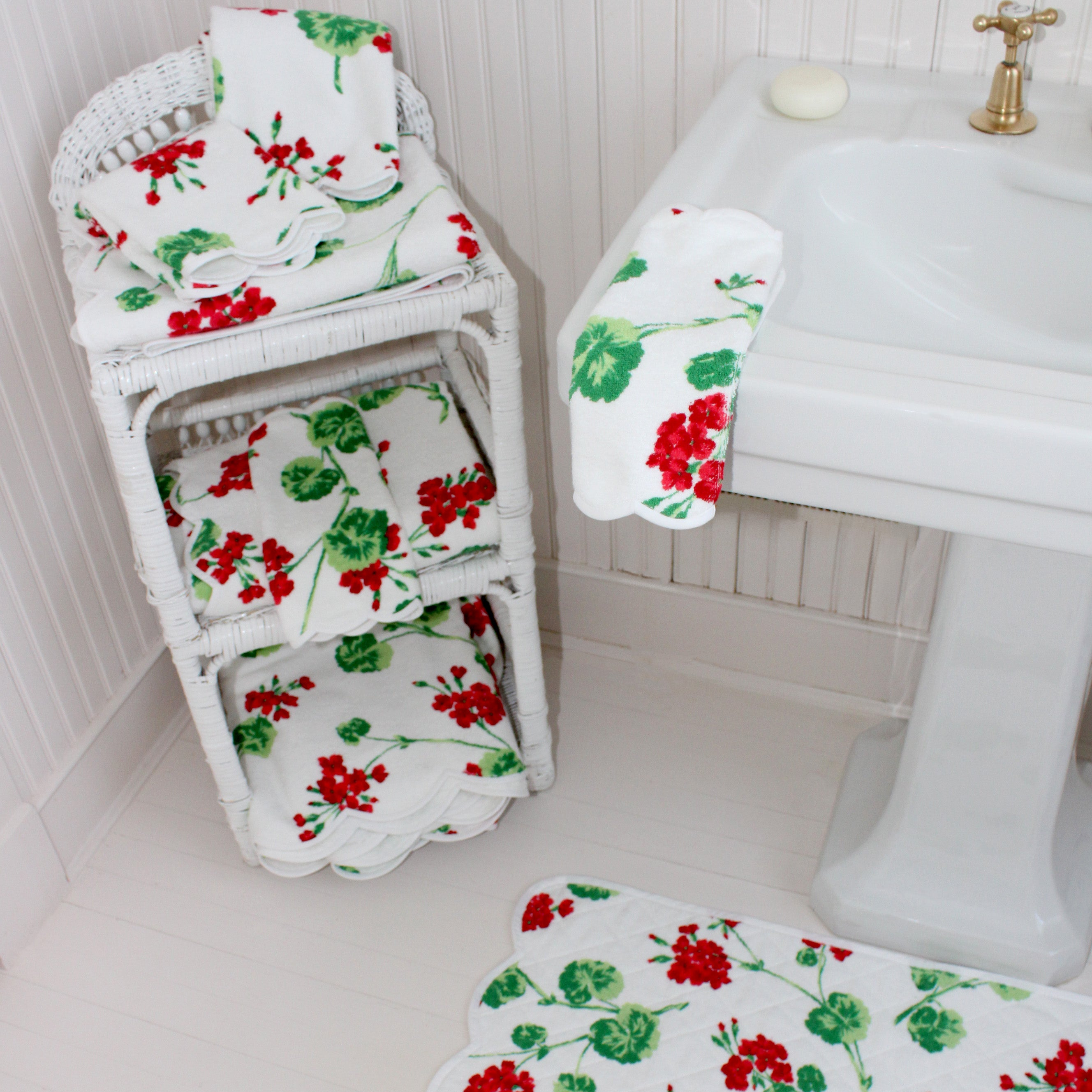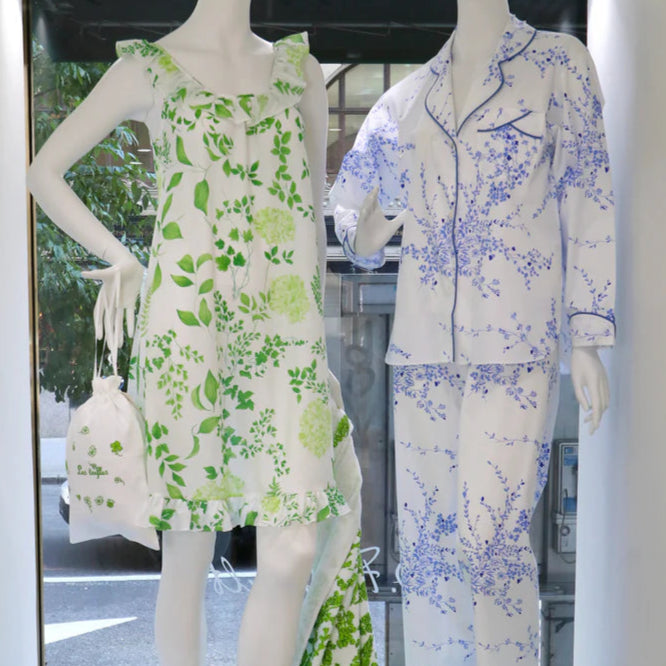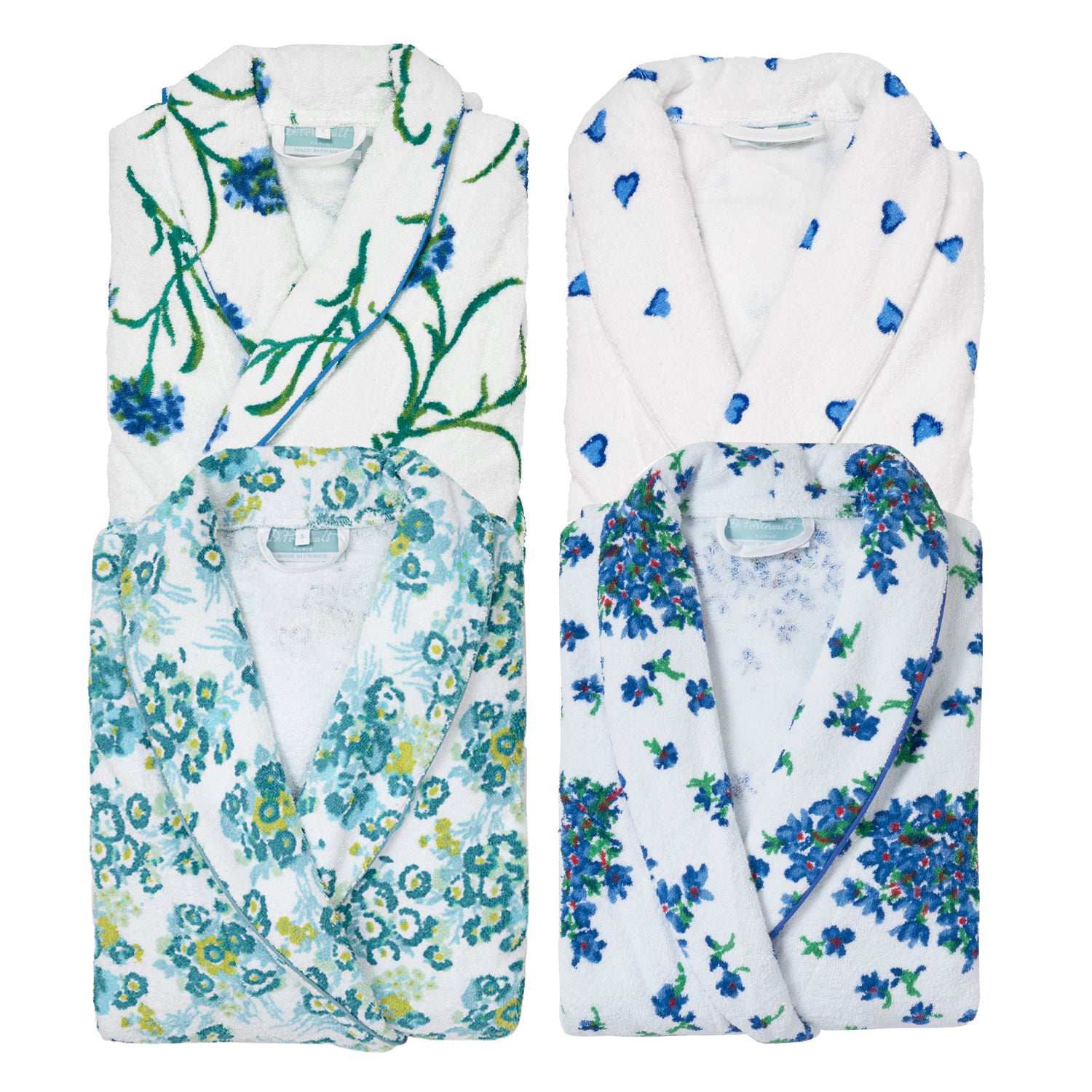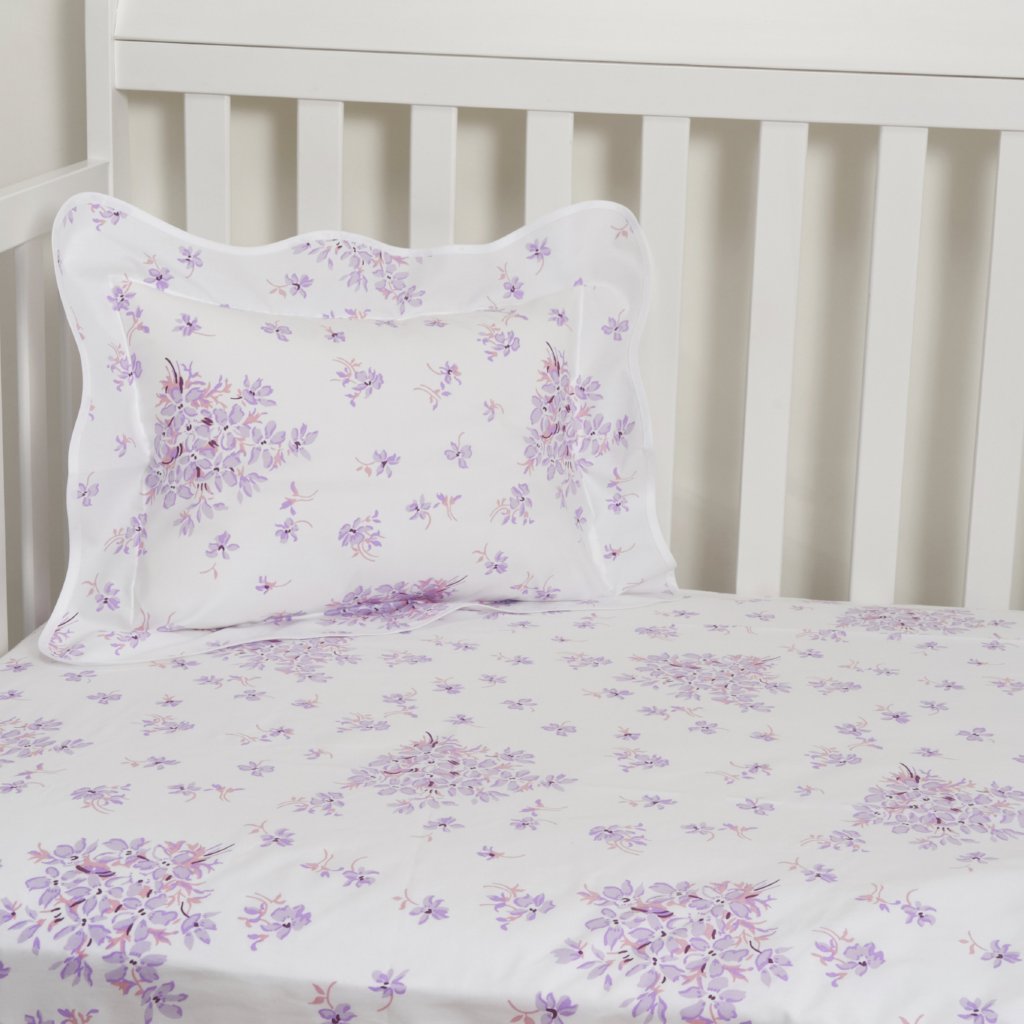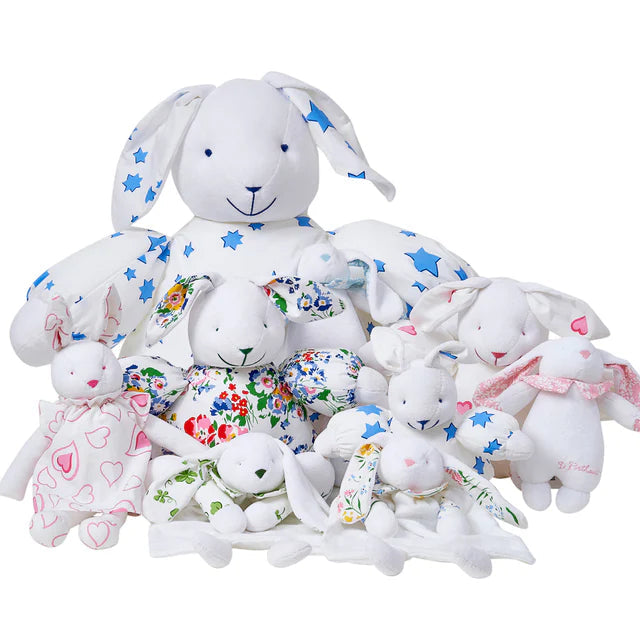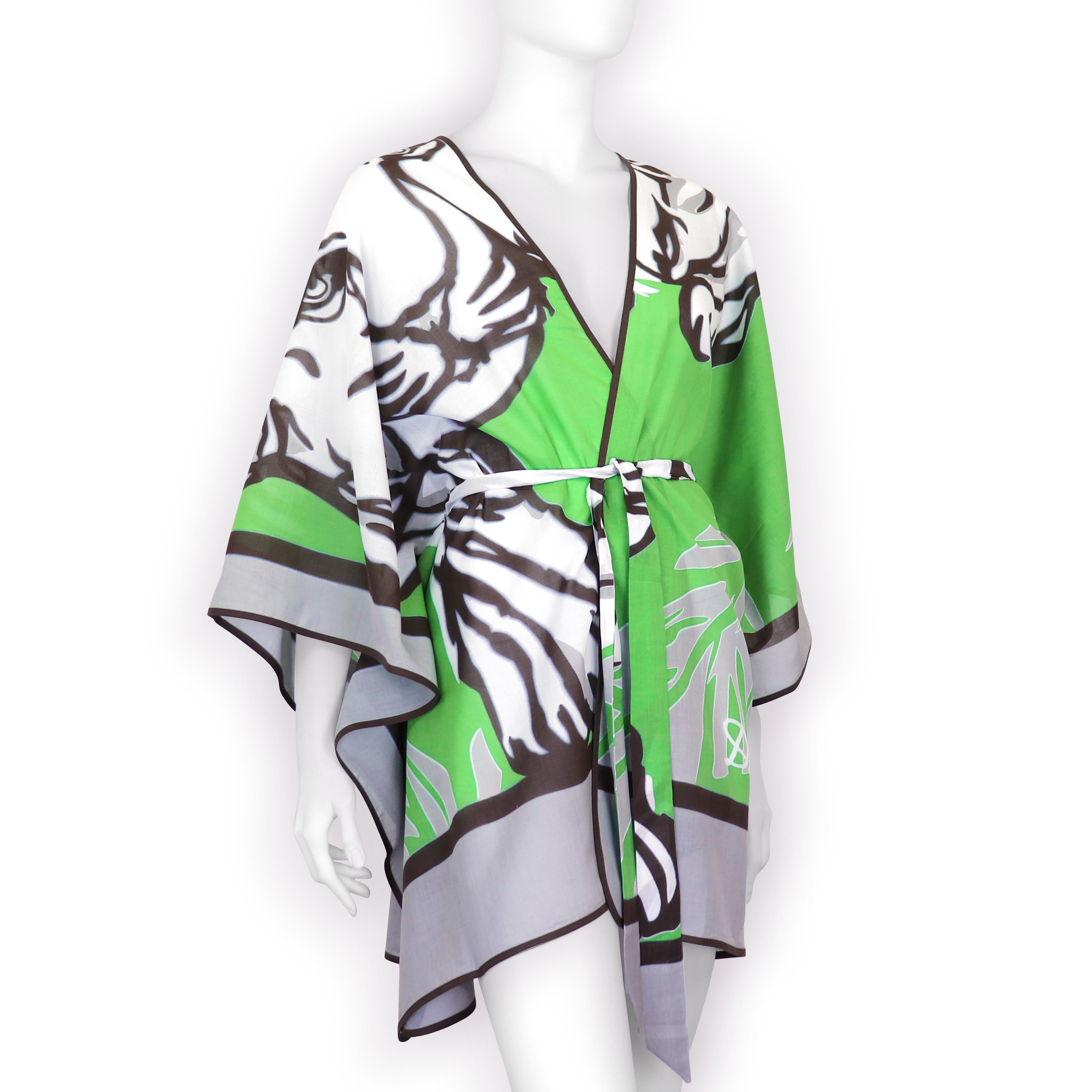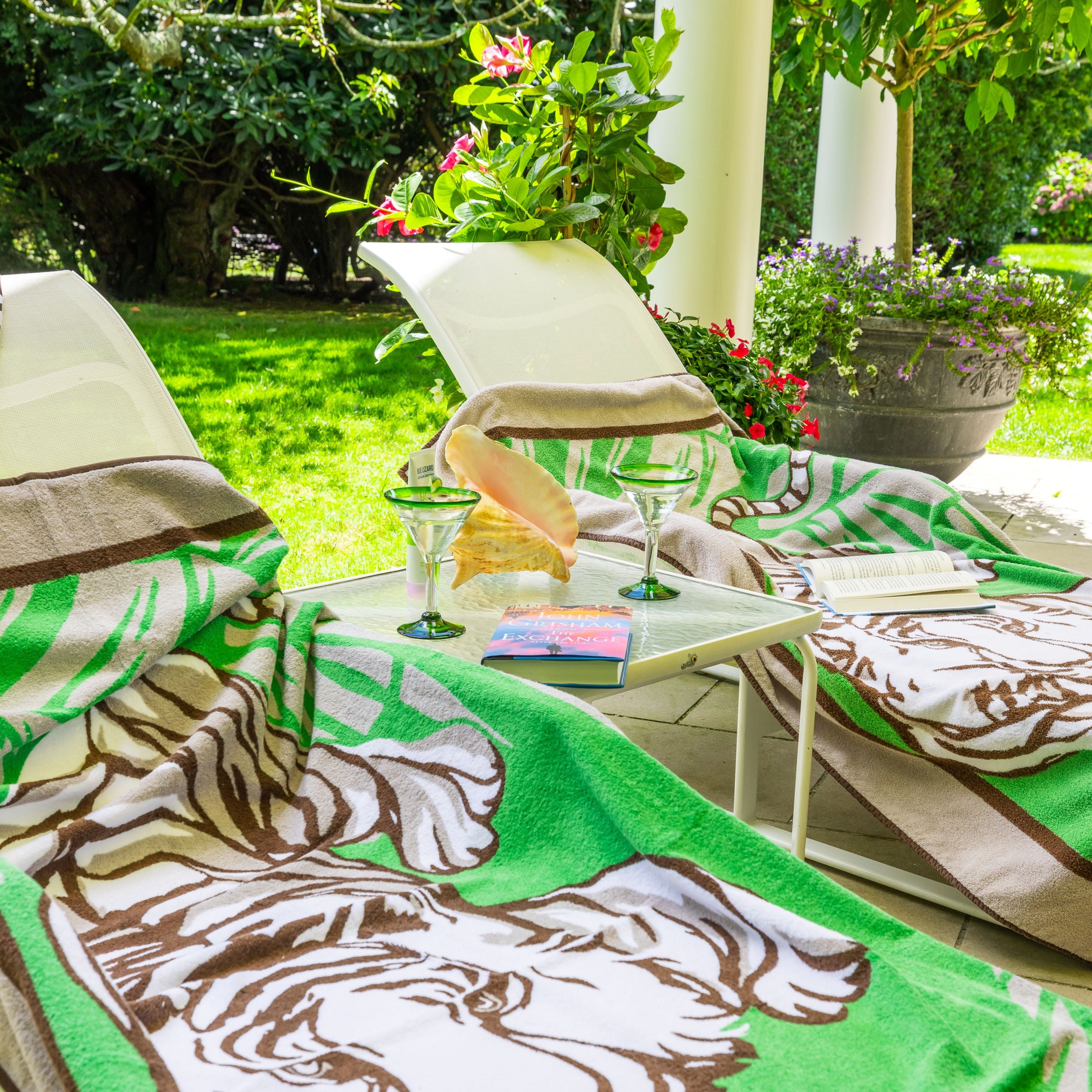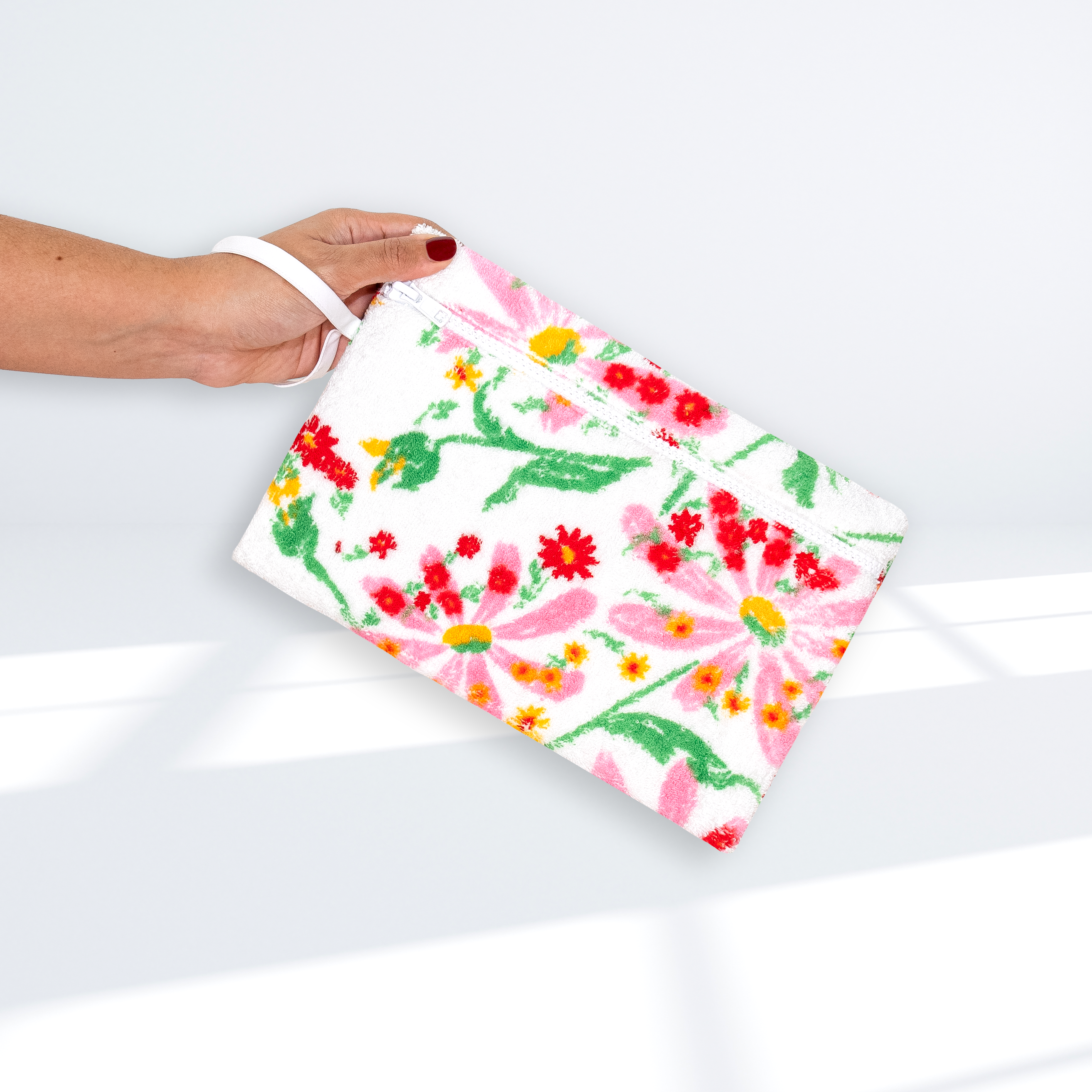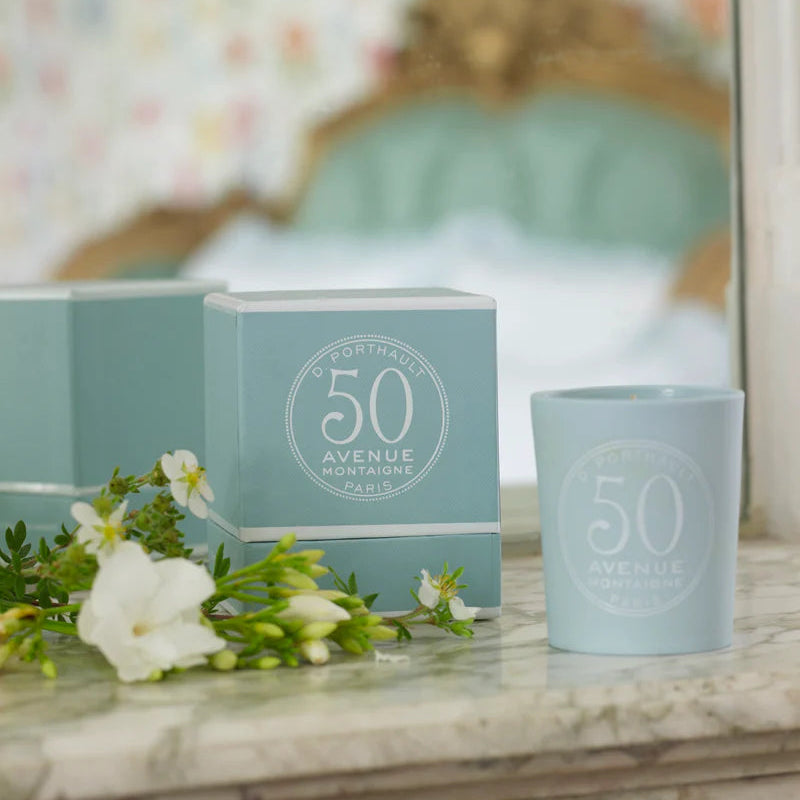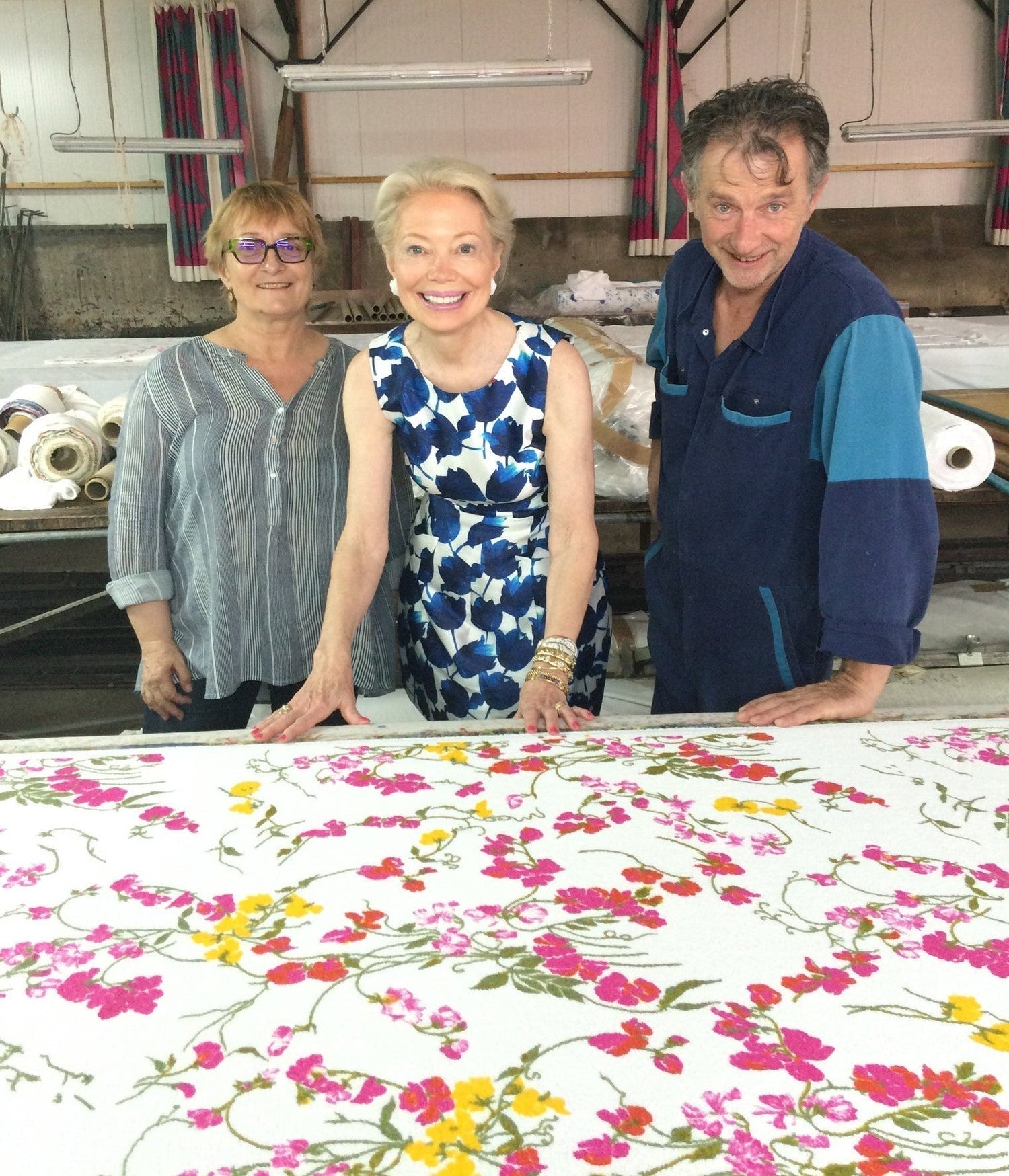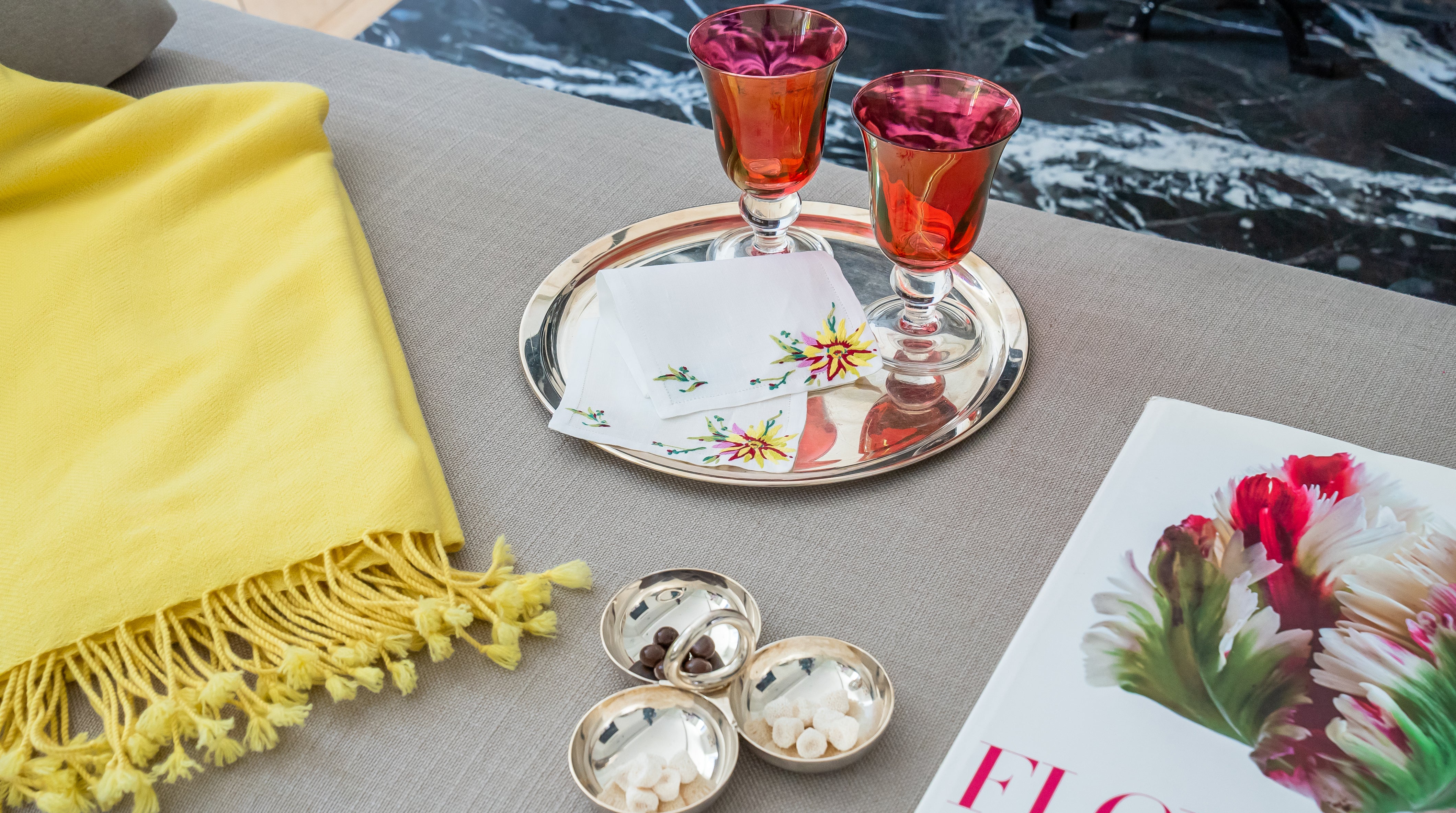D. Porthault’s textile printing progressed from hand painting, to block printing and, in the late 1940s, to screen printing. The hand-engraved screen printing process has changed little from that time, continuing today in our Normandy workshop.

In block printing, the design shapes were carved in relief into wooden blocks, with each color within the design requiring a separate block. Porthault’s hand-carved printing blocks were commissioned by Madeleine Porthault from craftsman in Paris, and many of these original wooden blocks are now part of our company’s archives. (Pictured is owner Joan Carl holding one sample block.) With block printing, the face of each carved block was saturated with dye and then placed over tightly stretched fabric. The back of the block was hammered with a wooden mallet, transferring the dye from the projecting carved shapes onto the cloth. The block was then moved to the next space on the fabric where the procedure was repeated, with pitch pins in each corner of the block to help align impressions.
A technique called picotage, where brass pins of various sizes were hammered into the wooden blocks, enabled the designers to realize a type of pointillism for shading and detailing within their prints. Sometimes, this dotted, or stippled effect became the major design element of the pattern. One can see this picotage technique in many of D. Porthault’s early designs. (Three examples are shown below.)
Of necessity, the blocks used in block printing had to be manageable within the printer’s hand. As a result, small scale designs with small scale repeats were mandated. One can see this reflected in D. Porthault’s earliest patterns which were printed in Paris.
Screen printing was employed by D. Porthault in the late 1940s upon moving to the historic textile region of Argentan, Normandy. In screen printing, patterns are incised onto material held tightly within metal frames, with each color in the design requiring a separate hand-engraved screen. For example, a 12 color print involves the use of 12 different printing screens.
The design elements are revealed by painting out the background of the screen with a protective varnish. The screen is then placed over fabric secured to a long table, and dye is applied with a roller pressing it through the screen. In 1948, special printing screens were created for terry, which was then able to be printed by this process just as the linen fabric was.
Screen printing allowed Porthault’s designers to create larger motifs and pattern repeats, resulting in more fluid designs. Additionally, because the pressure applied in adding color was more forgiving than the hammering required through block printing, the resulting colors could be brighter. This new ability to create more painterly designs with enhanced color vibrancy appealed to Madeleine Porthault, an artist herself. She loved using the bright colors that became a signature of the brand. Finally, screen printing enabled wider and longer fabric runs, necessary to satisfy the company’s growing demand for their products.
This is truly an artisanal process that is rarely seen today – one that is labor intensive, but one that allows for a full saturation and stabilization of color into fabric – creating textile prints that last a lifetime.
D. Porthault’s archives contain multiple pattern books which preserve on paper the many designs created over the decades, and these form an invaluable source of documentation for the company. No print is ever discontinued. Rather, D. Porthault’s prints are lovingly preserved and can merely ‘take a rest’ to be awoken at a later date. As D. Porthault celebrates 100 years of production, we are excited to reintroduce a number of archival prints throughout 2020.

